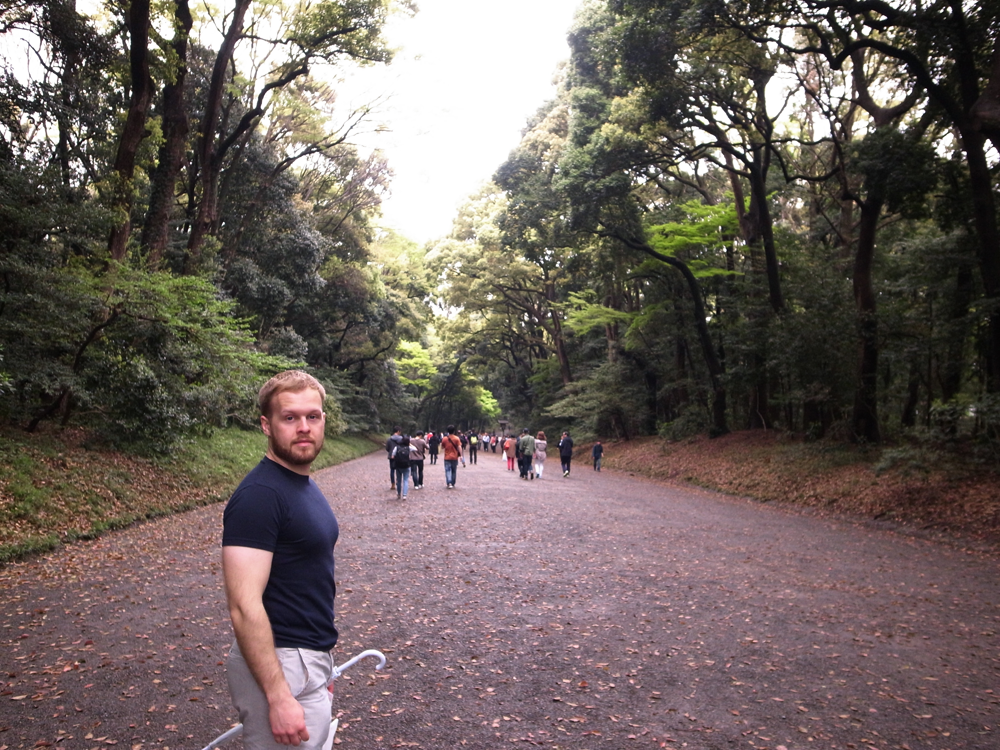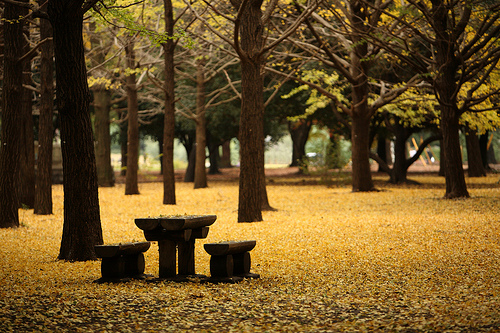- Favorite-Japan-Guide-Tour
- Yoyogi, Meiji
Yoyogi, Meiji
Seattle without the coffee, New York without Broadway, and Tokyo without its living connection to the past. A short study on Japan’s world-affecting and storied history is in order for travelers in Tokyo, but not for the sake of education alone. Like many countries burgeoning anew, and even those settled into the role on the world stage, Japan could never be what it is today without its history. History has played a significant but terrible part in the momentum by which this eastern nation has flourished. And just as the Japanese flag showcases a pure red sun suspended in a blank air of possibility, Yoyogi and Meiji too within our physical realm are suspended elements of the foundation that underlies Japan’s successful and ongoing reach towards modernity, and the continued evolution of that modernity.
The Meiji Shrine sits quietly, comfortably, intentionally, in the middle of the unending Tokyo Metropolis expansion. Inside the Japanese maples, zelkovas, camphors, and black pines of Yoyogi Park’s miniature wilderness is a patient, reverent frame of this country’s history, which is filled with triumph and tribulation alike. The shrine, dedicated to Emperor Meiji and his wife, Empress Shoken, rarely sees an empty courtyard, and attracts tens of thousands of visitors every week, and millions more during holiday seasons. As one of the premiere stops on the de facto Tour de Tokyo, it showcases the humble veneration by which citizens of Japan regard the man once called Meiji, the Great.
He was born in a separated, sectarian Japan landscape, where over 250 domains made up the expanse of what later became a unified Japan. Meiji’s nearly 45-year reign represented one of the greatest transformations in world history, and is referred to by many as the “Meiji Restoration”. The young emperor oversaw many democratic reforms and helped strengthen and focus the public’s growing resistance against western powers, assuring those powers would not tread on their once coerced state so carelessly. By the time of his death in 1912, Japan was an emergent and formidable force, even on the world stage. The New York Times once wrote, while reporting on the emperor’s funeral, “Before it went old Japan; after it came new Japan.” The Meiji Shrine represents the thanksgiving of modern Japanese, and the hope that future generations will prosper likewise.
The shrine is reverent to many facts about the past and future, while also eagerly showcasing the neighboring skylines of modernity and silver as it retains this recollection. Even the most boisterous shouts of urbanity emanating from the south at Shibuya or north at Shinjuku do little to make their way into this pensive place. There is possibly a symbolic yet insulating force of what once was modern against what now carries the mantle. The scene from above the park displays this fact in the starkest of ways, as 133 acres of unadulterated forest suddenly appears in the center of a thriving metropolis. Shibuya and Shinjuku are both driving forces in the Tokyo economy of arts, culture, and language, and Yoyogi Park and the Meiji Shrine both silently remind their witnesses to tread bravely but carefully into the future.












コメントを残す